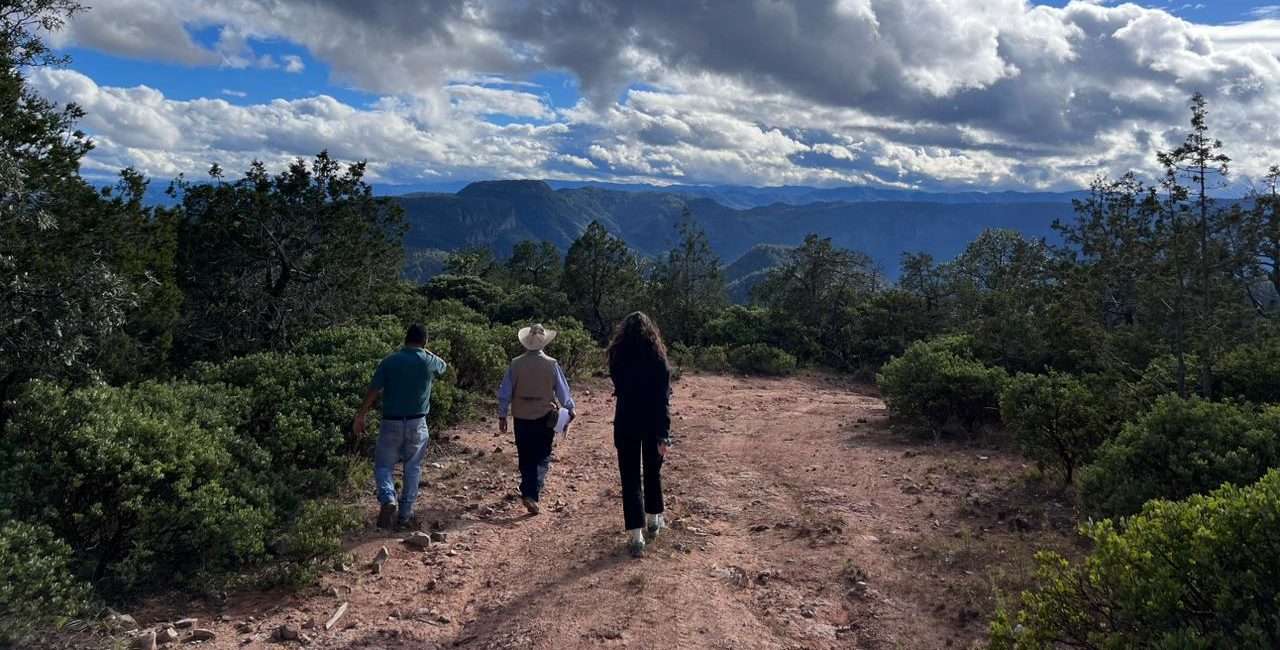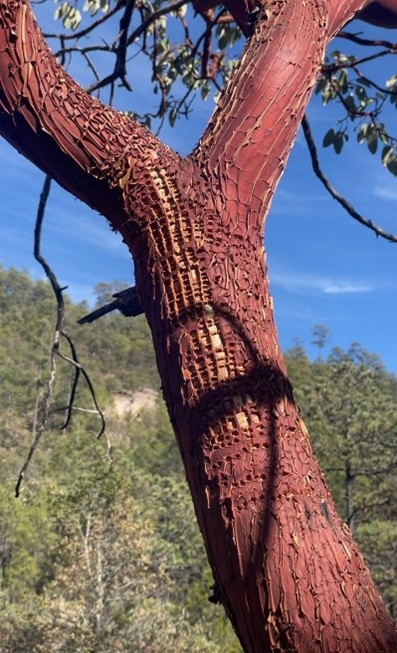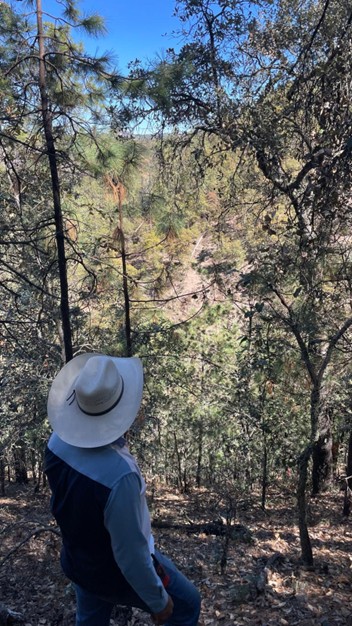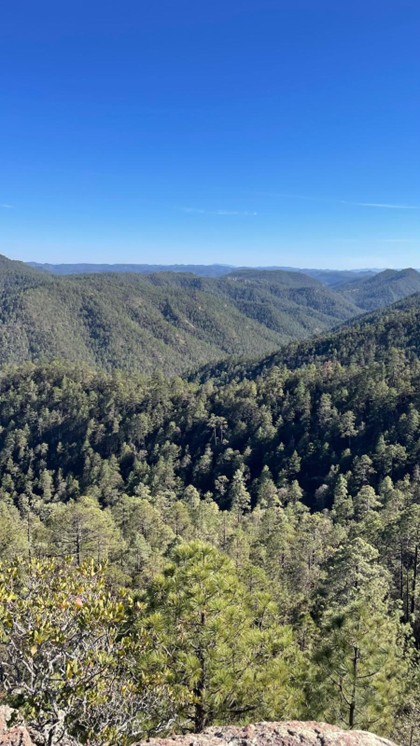
When it comes to forest-based climate solutions, reforestation often takes the spotlight, but managing existing forests more effectively can be just as valuable for carbon sequestration. In Mexico, Improved Forest Management (IFM) is gaining traction as a powerful complement to traditional reforestation efforts.
Our experience with the Mariposa project in Durango has provided valuable insights into how carbon credit projects work within Mexico’s unique social and environmental landscape. A key player in this context is the ejido system – a form of communal land ownership in which rural communities collectively manage and make decisions about their agricultural and forest lands Established through the 1917 Agrarian Reform, ejidos are deeply embedded in Mexico’s land governance and are central to the success of forestry initiatives like Mariposa.
Over the past two years, we’ve been collaborating with three ejido communities – Yesqueros, La Soledad, and San Ignacio – and our partner Montezumae Global Consultores to lay the groundwork for an ambitious initiative. The project aims not only to boost carbon storage, but also safeguard biodiversity, and create sustainable income for the local communities.

Improved Forest Management (IFM) marks a shift from traditional forestry, which often prioritizes timber extraction over carbon sequestration.
The goal of IFM is simple but impactful: to modify management practices in existing forests to increase carbon stocks. This can be achieved through various methods – whether by enabling forests to sequester more CO2 (removals), preventing greenhouse gas emissions (reductions), or both. Common IFM practices include:
Today, over 2 billion hectares of forest are actively managed worldwide, with human-managed forest areas increasing by more than 200 million hectares since the start of the 21st century (FAO, 2020).
As of July 2025, there are 160 IFM projects registered in the Climate Action Reserve (CAR) registry, demonstrating continued growth in the sector (Climate Seed, 2024). North America currently dominates the IFM landscape, with 93% of issued IFM credits coming from projects in this region. Notably, 78% of all registered projects are under the CAR standard, with only 4% listed on Verra (Orbify, 2024).
The IFM movement is gaining momentum globally. In Africa, Kenya and Uganda are using IFM to conserve forests and support local communities (FAO, 2021). Meanwhile, Brazil is applying IFM in the Amazon to reduce deforestation through secondary forest conservation and selective logging (UNDP, 2023). Mexico stands out as a leader in IFM, given its vast forested areas and the critical role of ejidos in managing these resources. These global efforts highlight the importance of IFM in climate mitigation and sustainable development.
The Mariposa project aims to prevent significant carbon stock reduction by setting annual harvesting limits to regulate timber extraction. This approach not only prevents over-exploitation but also guarantees forest regeneration, maintaining a healthy carbon stock over time.
In addition, we implement measures like thinning, pruning, reforestation, and firebreaks to improve forest health and reduce wildfire risks. Biodiversity monitoring, pest control, and soil restoration also support regeneration. Grazing restrictions are enforced, and enhanced surveillance prevents illegal logging. In total, over 2,000 hectares are dedicated to restoration, ensuring long-term carbon sequestration and ecosystem recovery.
Carbon Absorption
Through comprehensive forest management practices, the Mariposa project is expected to capture close to 2 million tons of CO2 over the next 30 years.
Biodiversity Benefits
By improving forest structure and preserving native species, we enhance habitat quality for a variety of wildlife, including eight IUCN-listed bird species. Among these are the critically endangered Imperial Woodpecker (Campephilus imperialis), the endangered Lilac-crowned Amazon (Amazona finschi), and the vulnerable Sprague’s Pipit (Anthus spragueii). The project prioritizes the conservation of native trees like Pinus durangensis and Arbutus xalapensis, ensuring a robust forest ecosystem that supports regional biodiversity.

Climate Awareness and Monitoring
Beyond environmental impact, the Mariposa project actively raises climate awareness among local communities. Through direct involvement in sustainable forest management, local stakeholders gain a deeper understanding of the project’s benefits. To ensure these goals are met, we’ll integrate monitoring tools like camera traps and other tech-enabled devices, which track wildlife presence and monitor species trends. This real-time data will help us detect any ecosystem changes and adapt management strategies as needed.
The Mariposa project brings significant socio-economic benefits to the three participating ejido communities. Over its 30-year duration, it is expected to generate almost $40 million from carbon credits and timber sales. Of this, 75% will be reinvested into local infrastructure, education, water systems, and forest-related initiatives, with funds managed by community assemblies to ensure transparency.
In addition to forestry, the project will offer a diverse gamut of socio-economic opportunities. It aims to leveraging Yesqueros’ strategic location near El Salto del Sabinal, one of Mexico’s largest waterfalls, to explore eco-tourism potential.It includes the installation of eco-friendly dry toilets and solar panels in homes, yearning to improve sanitation and reduce energy dependence. Training in financial management and sustainable agriculture is delivered to foster increased self-sufficiency. These examples represent only a small portion of the opportunities that the project funds could unlock. The full potential is still unfolding, but the prospects for local growth and sustainable development are immense.
Our field experience has highlighted the strong bond between communities and their forests. Through direct engagement, we’ve gathered testimonies from locals like Roberto from La Soledad, who shared how the project has given him new economic hope, and Daniel, who manages forestry documentation, expressing how acquiring new skills has enriched both his professional and personal life. The positive feedback we’ve received illustrates the real, tangible benefits the project brings to the community, reinforcing its ongoing success.

Looking back at the progress of the Mariposa project, we’re proud of what we’ve achieved so far. With the verification process with the Verification and Validation Body (VVB) starting in February 2025, we’re on track for CAR certification by late summer 2025. This will be followed by the first carbon credit issuance for vintages 2023 and 2024, totaling 120,788 credits.
The project not only enhances community resilience and contributes to climate mitigation, but it also serves as a model for sustainable forest management. We’re excited to see Mariposa continue to grow and inspire similar efforts globally, showing how community-driven initiatives and carbon finance can deliver both environmental impact and local empowerment.
